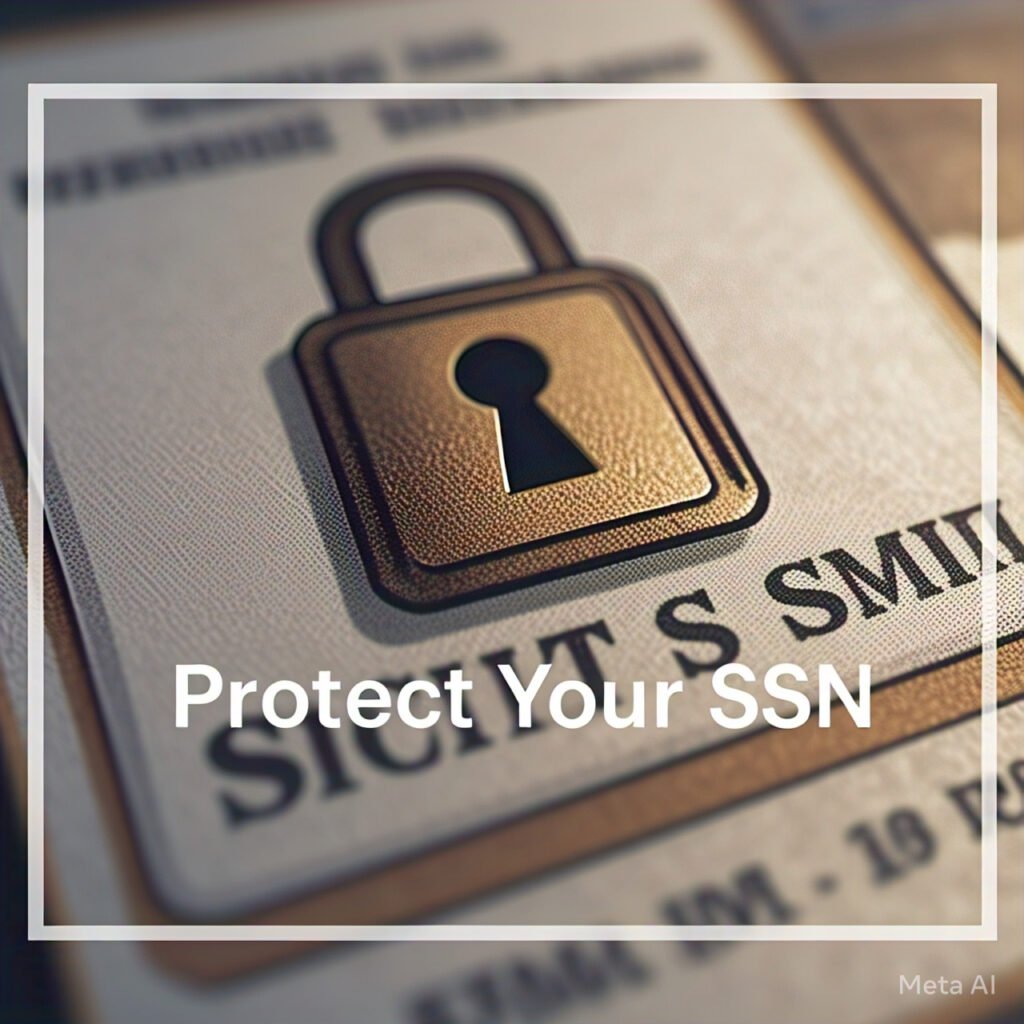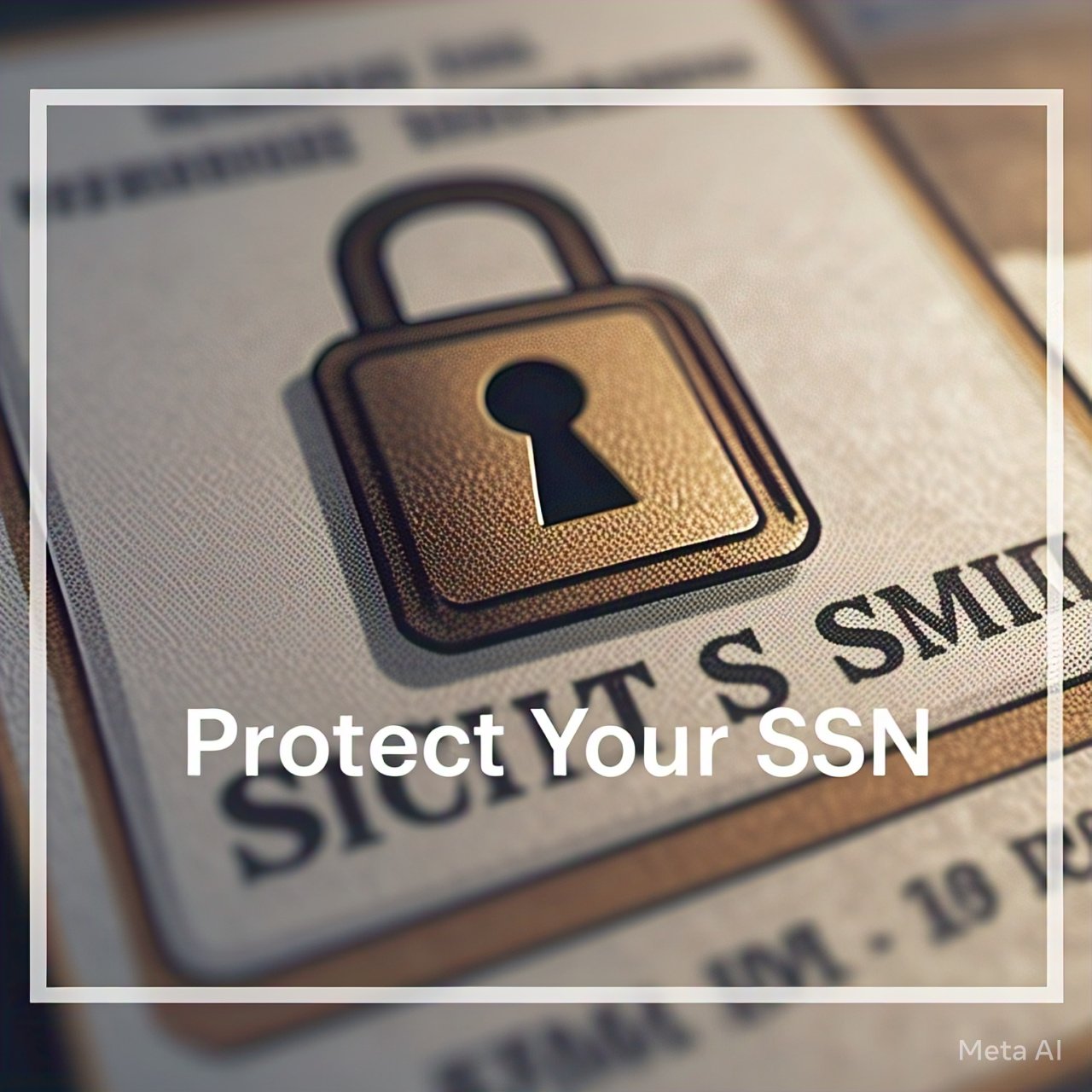Your Social Security number (SSN) is one of the most valuable pieces of personal information you possess—and it’s frequently targeted by scammers and identity thieves. With the rise of digital fraud and increasing reports of data breaches, protecting your SSN has never been more crucial. In this comprehensive guide, we break down the risks, explain how scammers operate, and offer actionable steps to protect your SSN from identity theft and scams. Backed by up-to-date research from government websites like USA.gov and authoritative sources such as the Federal Trade Commission, our article is designed to empower you to safeguard your financial and personal identity.

Table of Contents
Understanding the Risks: Why Your SSN is a Prime Target
Your SSN is a universal identifier. Unlike other personal information, it rarely changes over your lifetime. This makes it a valuable commodity for criminals who can use your SSN to:
- Open fraudulent credit card accounts or loans
- File fraudulent tax returns
- Gain access to your bank and insurance accounts
- Commit other forms of identity fraud
The Social Security Administration (SSA) and FTC emphasize that the misuse of your SSN can lead to long-term financial and emotional stress. With millions of Americans affected each year, understanding the vulnerabilities and risks is the first step in protecting yourself.
How Identity Theft Happens
Scammers use multiple methods to obtain your SSN. Here are some common tactics:
1. Phishing and Social Engineering
- Emails and Texts: Fraudsters send messages that appear to be from legitimate organizations like banks or government agencies. They often include urgent language that prompts you to share sensitive information.
- Fake Websites: These mimic official sites (look for the “.gov” domain) to trick you into entering your SSN.
2. Data Breaches and Cyberattacks
- Large-Scale Breaches: Companies and data brokers are regularly targeted by hackers. For instance, recent breaches have compromised billions of records, leaving SSNs exposed.
- Unsecured Networks: Using public Wi-Fi for financial transactions can make it easier for hackers to intercept your data.
3. Physical Theft and Dumpster Diving
- Lost or Stolen Wallets: Carrying your SSN card or documents with your SSN can result in easy theft.
- Discarded Mail: Personal documents thrown in the trash can be retrieved by criminals.
For more detailed information on these methods, check out trusted sources like the SSA’s fraud prevention page and FTC guidelines.
Ten Practical Steps to Protect Your SSN
Implementing strong security measures can significantly reduce your risk. Here are ten actionable strategies:
1. Limit the Use of Your SSN
- Ask Questions: Always ask why your SSN is needed, how it will be used, and what happens if you decline. Reputable organizations should be able to explain their need for your SSN.
- Share Sparingly: Only provide your SSN when absolutely necessary (e.g., for tax forms or when required by law).
2. Secure Physical Documents
- Safe Storage: Keep your Social Security card and related documents in a secure place at home. Avoid carrying your SSN card with you.
- Shred Sensitive Documents: Shred any paperwork containing your SSN before discarding it.
3. Protect Your Digital Identity
- Strong Passwords: Use strong, unique passwords for your online accounts. A password manager (like 1Password or LastPass) can help.
- Multi-Factor Authentication (MFA): Enable MFA on accounts that offer it to add an extra layer of security.
4. Monitor Your Credit and Financial Statements
- Regular Checks: Frequently review your bank and credit card statements for any unauthorized activity.
- Credit Reports: Obtain a free credit report annually from AnnualCreditReport.com or check weekly if available.
5. Freeze Your Credit
- Credit Freeze: Placing a freeze on your credit prevents new creditors from accessing your credit report. This is a free service provided by the major credit bureaus (Equifax, Experian, TransUnion).
Tip: Freeze your child’s credit as well to protect them from future identity theft.
6. Use Identity Theft Protection Services
- Monitoring Tools: Consider services that monitor the dark web for your SSN and alert you to suspicious activity. These can often be integrated with your online security suite.
7. Be Wary of Unsolicited Communication
- Verify Caller Identity: If you receive a call or email asking for your SSN or personal information, do not provide it. Instead, contact the organization directly using a trusted number.
- Avoid Clicking Suspicious Links: Always verify URLs; look for “https://www.ssa.gov/” or other official domains.
8. Create and Use Secure Online Accounts
- my Social Security Account: Set up your personal my Social Security account to review your records and monitor for unauthorized activity.
- Security Alerts: Enable account alerts for any changes or unusual activity.
9. Educate Your Family
- Family Passphrases: As suggested by cybersecurity experts, establish a secret passphrase with your family to verify identities during emergency calls.
10. Report Suspicious Activity Immediately
- File Reports: If you suspect your SSN has been compromised, report it immediately to the FTC’s IdentityTheft.gov, file a police report, and notify your financial institutions.
- Stay Updated: Follow updates from the SSA and FTC on scam alerts and new identity theft trends.
Tools and Resources
Here are some trusted resources and tools to help you protect your SSN:
- Social Security Administration (SSA): SSA Fraud Prevention
- Federal Trade Commission (FTC): IdentityTheft.gov
- Credit Bureaus:
- Educational Guides:
FAQs
Q1: What should I do if I suspect my SSN is compromised?
A: Immediately report the incident at IdentityTheft.gov, contact your financial institutions, place fraud alerts or a credit freeze with major bureaus, and file a police report.
Q2: How often should I check my credit report?
A: Experts recommend checking your credit report at least once a year. However, if you suspect fraud or are particularly vulnerable, you might check it weekly using free resources like AnnualCreditReport.com.
Q3: Is a credit freeze reversible?
A: Yes. You can temporarily lift or permanently remove a credit freeze by contacting the credit bureaus. This process is free and does not affect your credit score.
Q4: How can I prevent phishing scams that try to steal my SSN?
A: Always verify the sender’s identity, avoid clicking on unsolicited links, and use secure websites with “https://” in the URL. Additionally, enable multi-factor authentication on your accounts.
Q5: Why is my SSN so valuable to scammers?
A: Your SSN is a permanent identifier used for many financial transactions and benefits. Once it’s stolen, criminals can use it to access bank accounts, open new credit accounts, or file fraudulent tax returns—often with long-lasting repercussions.
Conclusion
Protecting your SSN is not just about preventing immediate fraud—it’s about safeguarding your long-term financial health and peace of mind. By following the steps outlined in this guide, from limiting SSN exposure to regularly monitoring your credit, you can significantly reduce the risk of identity theft and scams. Remember, vigilance and prompt action are key. Stay informed with trusted sources like the SSA, FTC, and our recommended tools, and share this guide with family and friends to help build a more secure community.
Disclaimer & Affiliate Disclosure
Disclaimer:
This article is for informational purposes only and should not be construed as legal or financial advice. Always consult a professional for personalized guidance.
Affiliate Disclosure:
Some links in this article are affiliate links, which means we may earn a commission if you make a purchase through them. This does not affect our editorial content or your purchase price.







